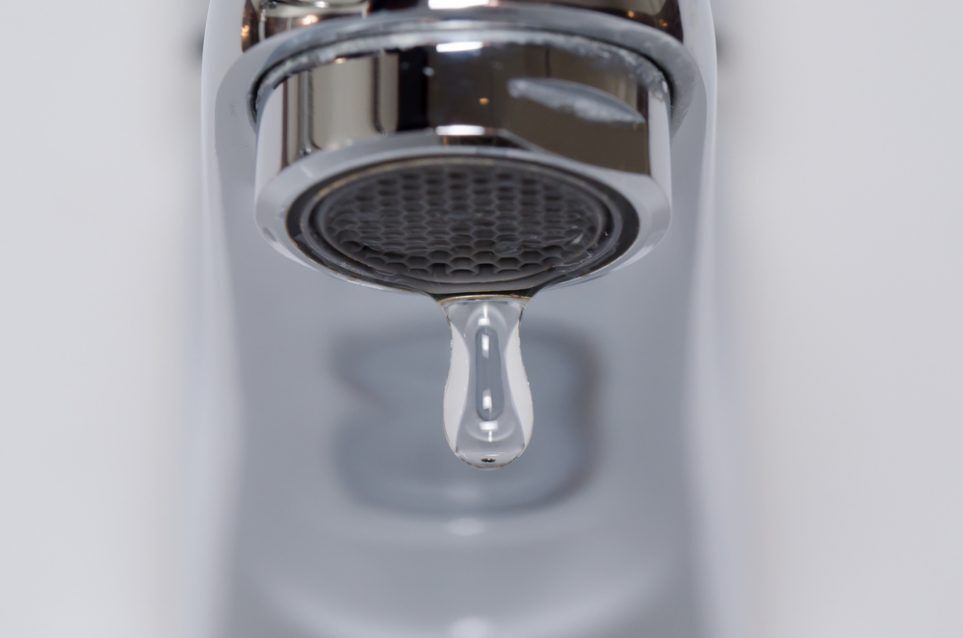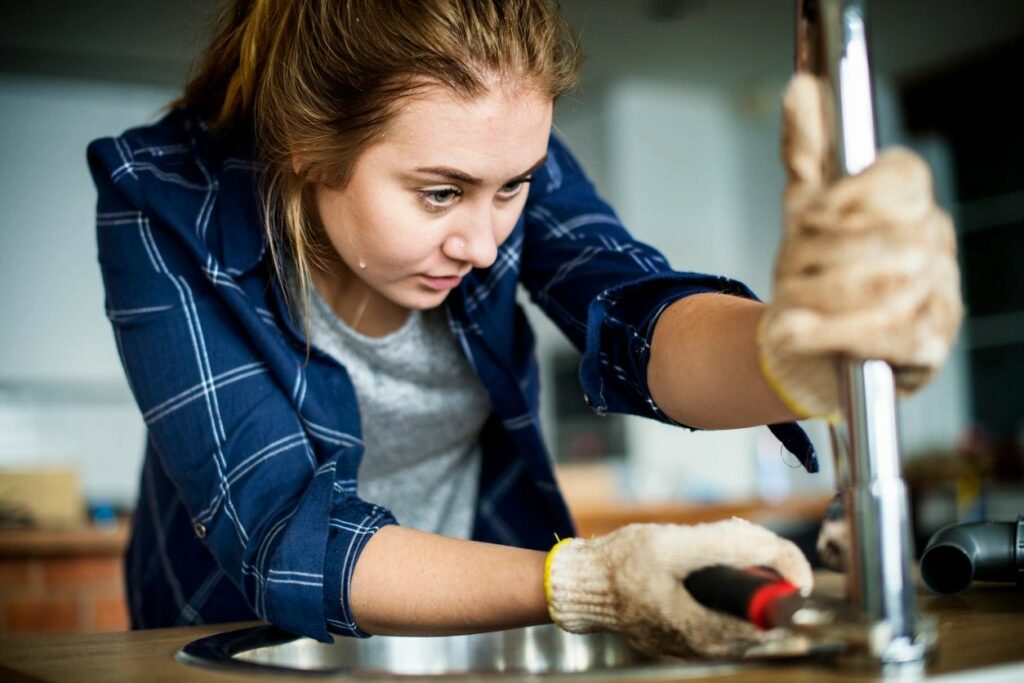Our Reasons Behind Resolving a Malfunctioning Faucet
Our Reasons Behind Resolving a Malfunctioning Faucet
Blog Article
What're your beliefs on Why Are My Faucets Dripping (And Can I Fix It Myself)??

Leaking taps might look like a small inconvenience, however their influence goes beyond just the aggravation of the audio. From wasting water to sustaining unnecessary financial prices and wellness risks, ignoring a dripping faucet can bring about various repercussions. In this post, we'll look into why it's essential to address this typical house issue immediately and effectively.
Waste of Water
Ecological Influence
Trickling taps add significantly to water waste. According to the Environmental Protection Agency (EPA), a single faucet leaking at one drip per secondly can squander more than 3,000 gallons of water per year. This not only pressures water resources yet additionally affects ecosystems and wildlife based on them.
Step-by-Step Overview to Dealing With a Dripping Faucet
Devices Needed
Prior to trying to deal with a dripping tap, gather the required devices, including an adjustable wrench, screwdrivers, replacement components (such as washing machines or cartridges), and plumber's tape.
Usual Tap Issues and Their Solutions
Identify the kind of tap and the specific concern causing the drip. Usual troubles include worn-out washers, rusty shutoff seats, or damaged O-rings. Describe manufacturer instructions or on the internet tutorials for detailed assistance on repairs.
Financial Costs
Increased Water Expenses
Past the environmental impact, leaking taps can inflate water expenses substantially. The collected wastage over time converts right into higher energy expenses, which could have been prevented with timely repairs.
Potential Property Damage
In addition, long term trickling can lead to harm to components and surfaces surrounding the faucet. Water buildup can trigger discoloration, rust, and also structural problems if left ignored, resulting in extra repair service expenses.
Wellness Problems
Mold and Mildew Growth
The continuous presence of moisture from a leaking faucet produces a perfect atmosphere for mold and mildew and mold development. These fungis not just endanger interior air top quality yet additionally posture wellness threats, specifically for people with respiratory problems or allergic reactions.
Waterborne Conditions
Stationary water in trickling faucets can come to be a breeding ground for microorganisms and various other virus, boosting the threat of waterborne illness. Impurities such as Legionella microorganisms grow in stagnant water, potentially leading to serious illnesses when ingested or breathed in.
Do it yourself vs. Specialist Fixing
Advantages and disadvantages of DIY Fixing
While some may try to repair a leaking tap themselves, do it yourself repair services feature their very own collection of difficulties. Without appropriate understanding and devices, do it yourself attempts can intensify the problem or cause incomplete repair work, lengthening the issue.
Advantages of Hiring an Expert Plumber
Working with an expert plumber ensures that the underlying cause of the leaking faucet is dealt with effectively. Plumbers have the expertise and equipment to detect and repair tap problems efficiently, conserving time and reducing the risk of additional damage.
Environmental Responsibility
Individual Contribution to Preservation
Taking duty for taking care of leaking faucets lines up with broader efforts towards water conservation and environmental sustainability. Every individual's actions collectively make a substantial effect on preserving precious sources.
Sustainable Living Practices
By prioritizing punctual fixings and taking on water-saving habits, people contribute to lasting living methods that benefit both present and future generations.
Safety nets
Routine Upkeep Tips
To stop trickling taps, execute routine upkeep such as cleaning up aerators, checking for leaks, and changing damaged components quickly. Furthermore, think about installing water-saving tools or updating to much more effective fixtures.
Value of Prompt Repair Works
Addressing leaking faucets as soon as they're observed stops additional water wastage and prospective damages, eventually saving both water and cash over time.
Impact on Residential Or Commercial Property Worth
Perception of Well-Maintained Residential Property
Maintaining a building in good condition, including resolving maintenance issues like leaking taps, boosts its perceived worth and value amongst prospective buyers or renters.
Influence on Resale Value
Qualities with well-maintained plumbing components, including taps, command higher resale values in the real estate market. Dealing with leaking taps can contribute to a positive impact during residential property evaluations and settlements.
Final thought
Attending to a leaking faucet surpasses plain benefit; it's a vital step towards saving water, decreasing financial costs, and protecting health and wellness and residential property. Whether via DIY repair services or specialist aid, taking action to deal with dripping taps is a tiny yet impactful way to promote accountable stewardship of resources and add to a healthier, much more sustainable future.
How to Fix a Dripping or Leaky Faucet
A leaking faucet is one of the most common problems that homeowners encounter, but it being commonplace doesn’t make it any less annoying. The constant drip drip drip of a leaking bathtub faucet, showerhead, or sink tap can disturb your home’s serenity. Left neglected, a dripping faucet can also result in higher water bills and discoloration or mold growth in your sink or plumbing fixtures.
Fortunately, you don’t have to be a trained plumber to know how to stop a dripping faucet. With some basic tools, replacement parts, and a little patience, leaky faucet repair is a breeze. In this article, we’ll explain what causes dripping faucets and how you can fix them.
What Causes a Leaking Faucet?
Kitchen and bathroom faucets come in all manner of designs, but most involve some combination of valves, O-rings, seals, and washers. The O-ring is usually the weakest link, but any one of these pieces can wear down over time. Heat, moisture, temperature fluctuations, minerals, mold, and movement can contribute to warping and corrosion, breaking the watertight seal. This just comes with the territory of being a homeowner. Everything is always subject to wear and tear, and some component parts of your appliances and fixtures need to be replaced on occasion. At least replacement O-rings are cheap!
More rarely, dripping faucets can be a symptom of excessively high water pressure. Were this the case in your home, you would probably notice that the leak is not isolated to one faucet. Water pressure issues are harder to resolve on your own. We recommend contacting a professional plumber if you suspect your water pressure is too high.
How to Fix a Dripping Faucet
Pipe wrench or monkey wrench Allen wrench set Screwdrivers Old towel or rag Shut off the water.
Before you do anything, you need to turn off the water to keep from drenching your kitchen or bathroom. You should find a valve under the sink and against the wall. Once you’ve turned this valve, try turning the faucet on to confirm that the water source has been cut off.
If you can’t locate your local valve for the faucet you’re working on, you can always shut off the water to the house at the main valve. Of course, this will prohibit anyone from using the sinks, showers, or toilets while you’re working on the faucet that’s giving you trouble.
Plug or block the drain.
You’ll be disassembling the faucet and removing some small bits of hardware. Plug the drain with a stopper or rag to avoid the possibility of a small screw falling into your P-trap.
Take apart the faucet assembly.
There are several varieties of kitchen and bathroom faucets, each with its own manner of assembly. For detailed instructions on how to disassemble your faucet, you can refer to the fixture’s manual or contact the manufacturer. If you know whether you have a ball, disc, cartridge, or compression faucet, you can find detailed schematics online.
In general, you need to begin by removing the faucet handles. You might notice a small screw that you’ll need to remove with a screwdriver or Allen wrench. If you don’t see any visible securing hardware, it’s likely hidden under a decorative cap that can be unscrewed or popped off with flathead screwdriver.
Remove each piece methodically, consulting a schematic when necessary. Take notes or arrange the pieces in such a way to make it easier to correctly reassemble the faucet later.
Remove the cartridge.
Once you’ve removed the handles and securing hardware, you should be able to remove the valve cartridge or stem. Some cartridges will slide right out. Other faucet models will require you to loosen a nut with a pipe wrench before you can remove the valve stem.
Examine the exposed hardware.
With the cartridge or stem removed, inspect the component parts. Check the rubber O-rings for wear and tear. Also examine the seat washer for corrosion or other damage. These pieces are usually the responsible parties for a dripping faucet, but it’s worth inspecting the other component parts while you have the faucet disassembled.
Find replacement parts.
Once you’ve identified which faucet component has failed, find an identical replacement. Your local hardware store should have O-rings, seat washers, and other standard components in stock. If you have a luxury or uncommon faucet, you may have to contact the manufacturer for a replacement part.
It’s a good idea to take your old parts with you to the hardware store so you can compare them with the store’s inventory and be sure you’re purchasing the correct replacement.
Reassemble the faucet.
With your new parts in hand, reconstruct the faucet and handles. Don’t be tempted to overtighten screws or nuts. You might think this could create a better seal, but it can instead damage or bend a delicate part of the assembly and create a new problem for you.
Turn on the water and test the faucet.
The only thing left to do is test your work. Unplug the sink, turn the water back on, and try the faucet. Congratulate yourself on a job well done!
https://www.libertyhomeguard.com/how-to-fix-a-dripping-or-leaky-faucet/

I am very intrigued by 4 Common Reasons for a Leaky Faucet and I'm hoping you appreciated my piece. Are you aware of anybody else who is excited about the niche? Please feel free to promote it. I am grateful for being here. Kindly check our blog back soon.
Report this page